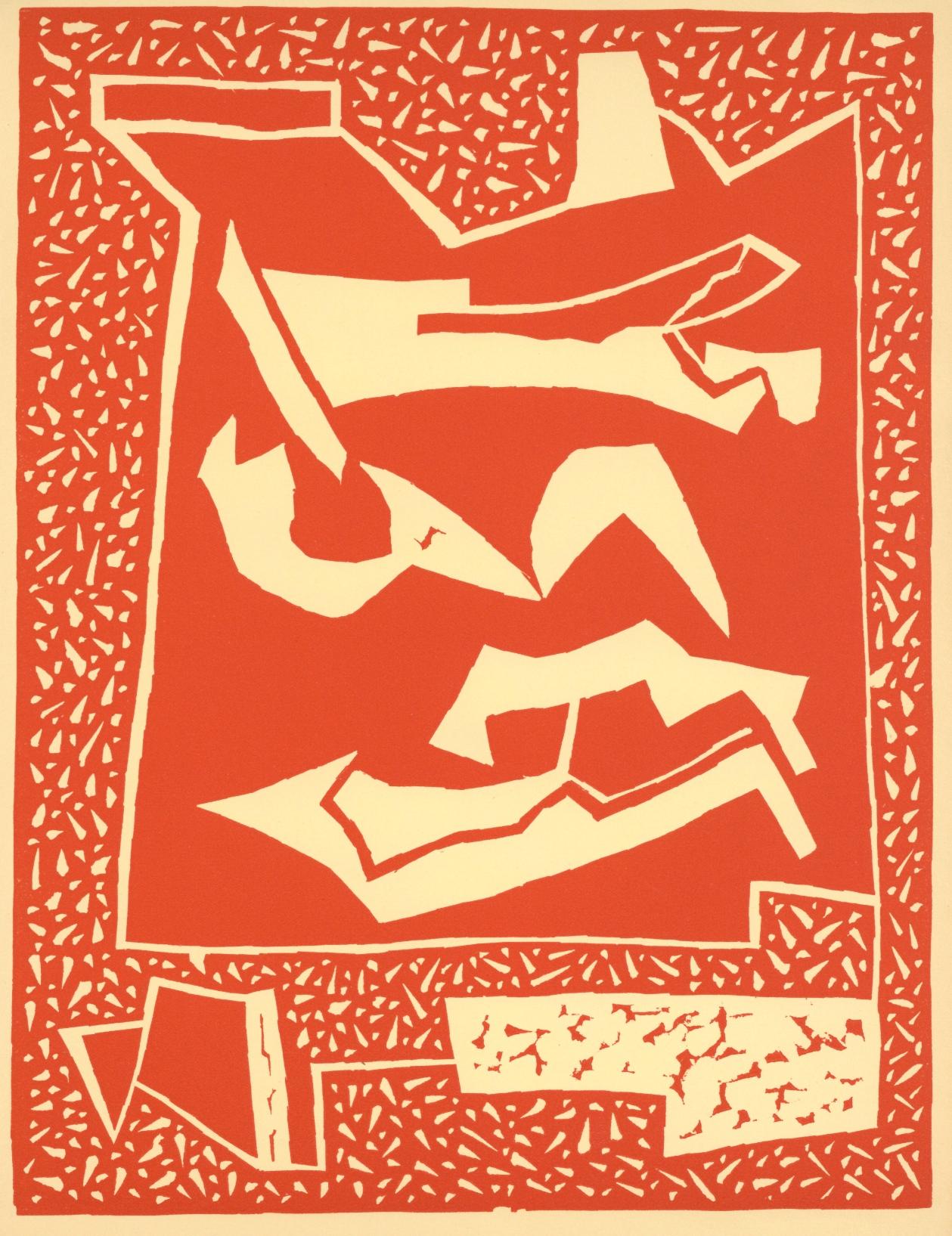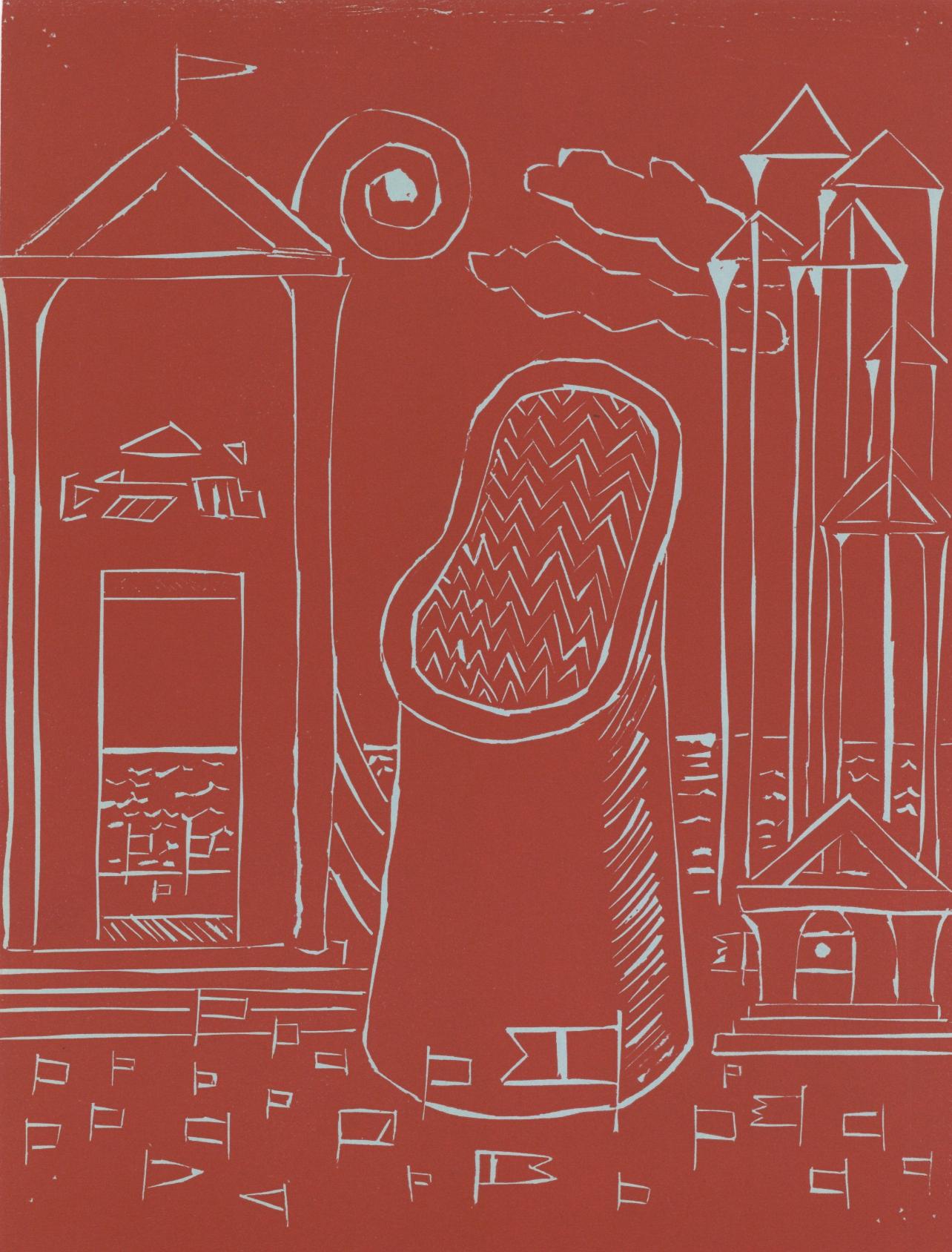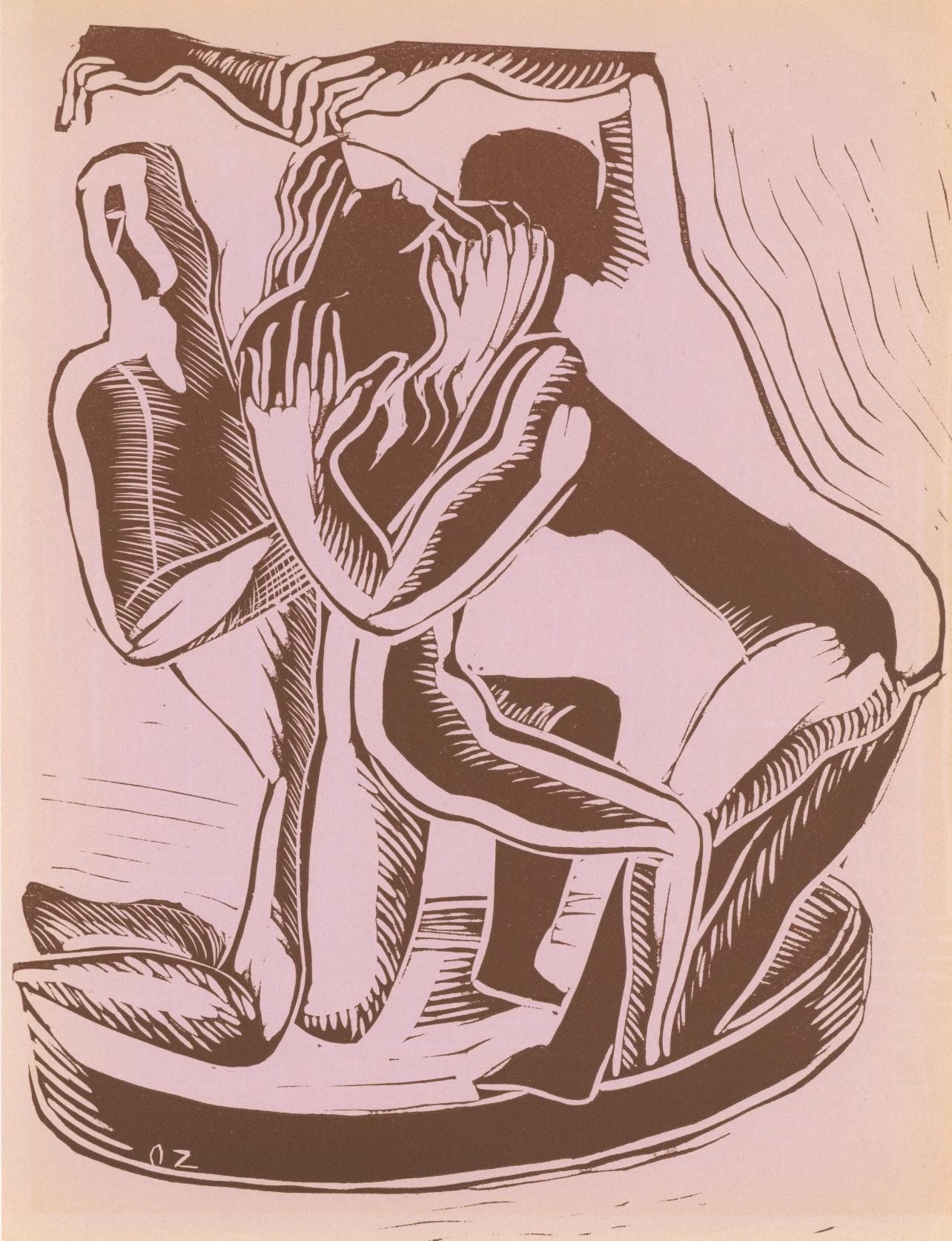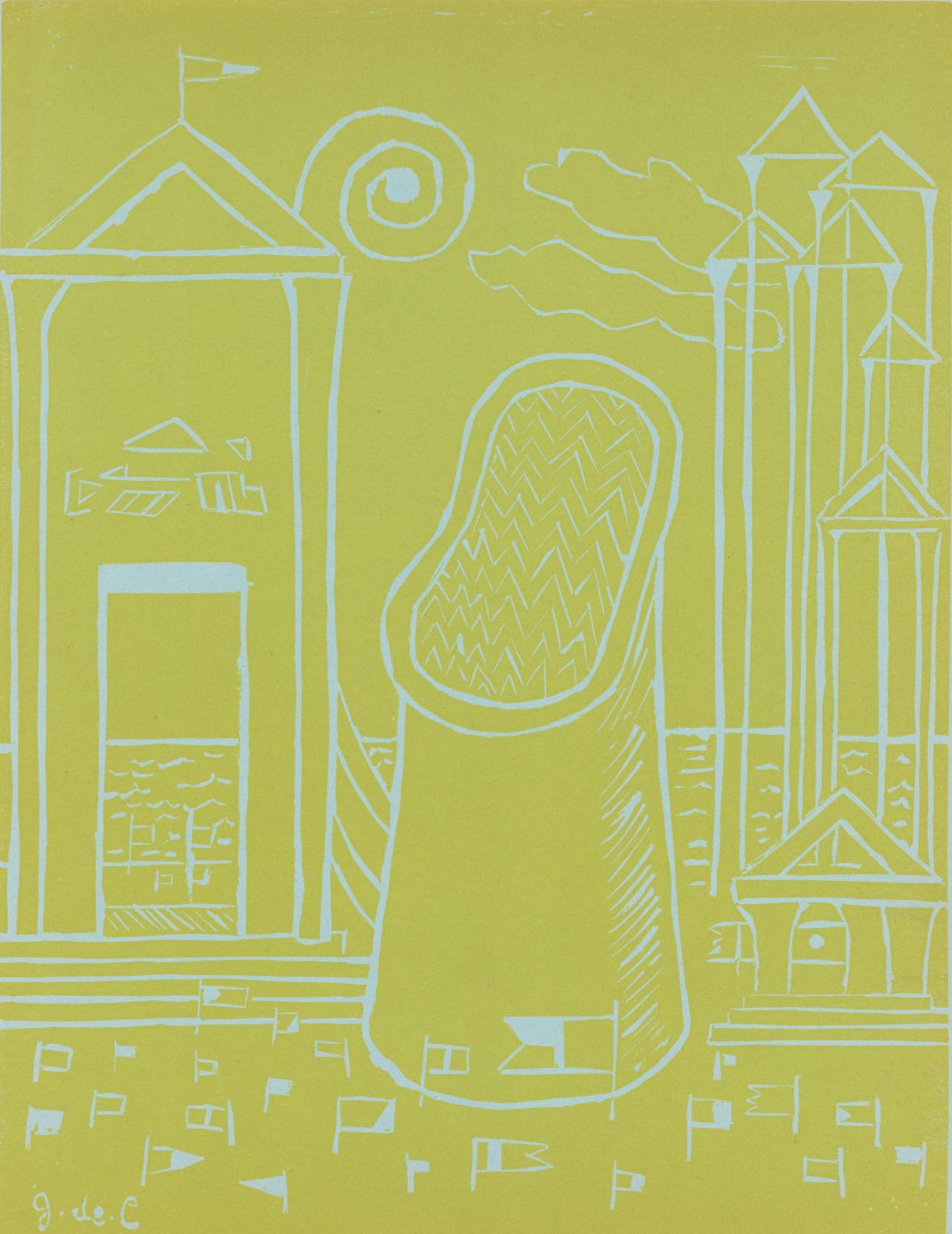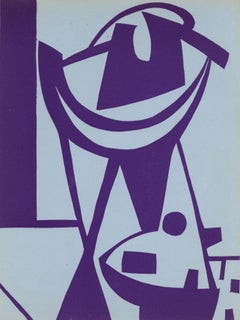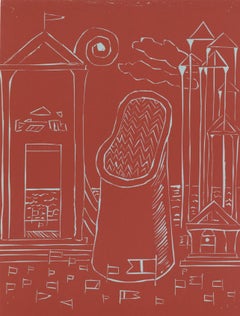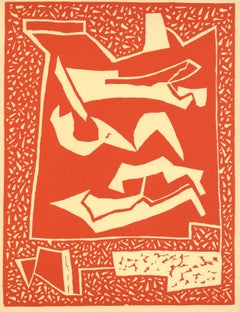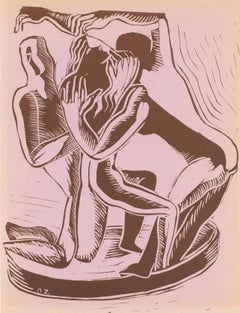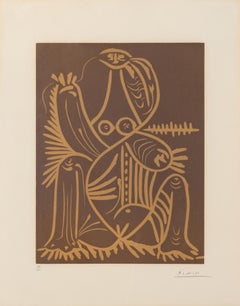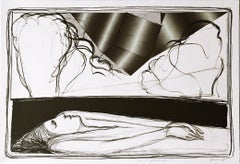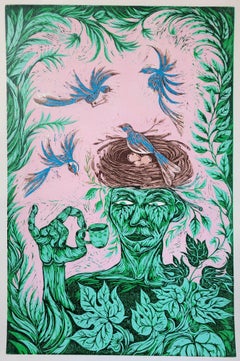Items Similar to Bill, Composition, XXe Siècle (after)
Want more images or videos?
Request additional images or videos from the seller
1 of 5
Bill, Composition, XXe Siècle (after)1938
1938
About the Item
Linocut on vélin paper. Inscription: Unsigned and unnumbered, as issued. Good condition. Notes: From the volume, XXe Siècle, vol. n°4, 1938. Published and printed under the direction of Gualtieri di San Lazzaro, éditeur, Paris, by Société Internationale d'Art XXe siècle, Paris. Excerpted from the academic article, “Promoting Original Prints, The Role of Gualtieri di San Lazzaro and XXe Siècle” by Valerie Holman, published in PRINT QUARTERLY, XXXIII, 2016, 2, Until recently very little has been written on the Italian author and art publisher Gualtieri di San Lazzaro (1904-75), yet for 50 years he chronicled the life and work of contemporary artists, produced monographs of exceptional quality, and disseminated original prints by modern painters and sculptors through his best-known periodical, XXe Siècle. Although still a relatively unfamiliar figure in the United Kingdom, San Lazzaro is one of the half-dozen great art publishers of the mid-twentieth century who, together with his exemplar, Ambroise Vollard (1866-1939), and those of his own generation, Christian Zervos (1889-1970), Tériade (1889-1983) and Albert Skira (1904-73), chose to base himself in Paris, seeing it throughout his life as the centre of the art world….XXe Siècle, an illustrated periodical, was launched in 1938 and printed in editions of approximately 2,000, each issue containing both photographs and four-colour separation reproductions across a wide spectrum of visual imagery ranging from masterpieces of Western painting to popular prints from the Far East. Its large format, lively design, and close integration of text and image, were immediately striking, but its most innovative feature, introduced at the suggestion of Hans Arp (1886-1966), was the inclusion of original prints by contemporary artists in every issue. With obvious appeal for collectors, XXe Siècle was also designed to introduce a wider, international public to contemporary painting and sculpture through good quality colour reproductions and the immediacy of original prints. Comparable in price to Cahiers d'Art, early issues of XXe Siècle sold out rapidly. While San Lazzaro's own aesthetic preferences tended towards lyric abstraction, he made clear that XXe Siècle was non-partisan [publication ceased during World War II]….in 1951, San Lazzaro relaunched XXe Siècle with thematic issues that were materials based, or centred on a topic of current interest in the visual arts, particularly in Europe: concepts of space, matter, monochrome, mark-making and the sign.' A defining feature of the new series was Italy's artistic dialogue with France for, while San Laz-zaro had originally concentrated on Paris-based painters and sculptors, his aim was to create an international network, to make known the work of French artists in Italy and Italian artists in France, and subsequently extend this bilateral axis to the English-speak-ing world. The artists represented in No. I by an original print were all best known as sculptors: Arp, Laurens, Henry Moore (1898-186) and Marino Marini, San Lazzaro not only sought to show readers the full range of an artist's work, but to encourage the production of prints, a stimulus much appreciated, for example, by Magnelli…. Suffering from failing health, in 1968 San Lazzaro lost overall control of XXe Siècle to Léon Amiel, a printer-publisher who had provided financial backing and helped with distribution in America." Thematic issues now ceased and were replaced by a 'panorama' of the year, but San Lazzaro was still active as a publisher of books and albums of prints….Shortly after his death, San Lazzaro himself was the subject of two exhibitions: 'Omaggio a XXe Siècle' in Milan in December 1974 centred on graphic work by those artists closest to him late in life, while 'San Laz-zaro et ses Amis' at the Musée d'Art Moderne de la Ville de Paris in 1975 featured work by all those whose work he had promoted for more than 50 years: Arp, Calder (1898-1976), Capogrossi, Chagall, Sonia Delau-nay, Dubuffet, Estève, Lucio Fontana (1899-1968), Gili-oli (1911-77), Magnelli, Marini, Miró, Moore and Poliakoff. This exhibition was seen by one of his closest colleagues as an indirect portrait of San Lazzaro, a complex man whose modesty and reserve masked his unremitting drive to extend international appreciation of contemporary art, and to bring the reading public closer to its making through the medium of print.
MAX BILL (1908-1994) was a Swiss architect, artist, painter, typeface designer, industrial designer and graphic designer. Bill is widely considered the single most decisive influence on Swiss graphic design beginning in the 1950s with his theoretical writing and progressive work. His connection to the days of the Modern Movement gave him special authority. As an industrial designer, his work is characterized by a clarity of design and precise proportions. Examples are the elegant clocks and watches designed for Junghans, a long-term client. Among Bill's most notable product designs is the "Ulmer Hocker" of 1954, a stool that can also be used as a shelf element, a speaker's desk, a tablet or a side table. Although the stool was a creation of Bill and Ulm school designer Hans Gugelot, it is often called "Bill Hocker" because the first sketch on a cocktail napkin was Bill's work. As a designer and artist, Bill sought to create forms which visually represent the New Physics of the early 20th century. He sought to create objects so that the new science of form could be understood by the senses: that is as a concrete art. Thus Bill is not a rationalist – as is typically thought – but rather a phenomenologist. One who understands embodiment as the ultimate expression of a concrete art. In this way he is not so much extending as re-interpreting Bauhaus theory. Yet curiously Bill's critical interpreters have not really grasped this fundamental issue. He made spare geometric paintings and spherical sculptures, some based on the Möbius strip, in stone, wood, metal and plaster. His architectural work included an office building in Germany, a radio studio in Zurich, and a bridge in eastern Switzerland. In 1944, Bill became a professor at the Kunstgewerbeschule Zürich. In 1953, alongside Inge Aicher-Scholl and Otl Aicher, he founded the Ulm School of Design (German: Hochschule für Gestaltung – HfG Ulm) in Ulm, Germany, a design school initially created in the tradition of the Bauhaus and which later developed a new design education approach integrating art and science. The school was notable for its inclusion of semiotics as a field of study. The school closed in 1968. Faculty and students included Tomás Maldonado, Otl Aicher, Josef Albers, Johannes Itten, John Lottes, Walter Zeischegg, and Peter Seitz. Bill was a professor at the Hochschule für bildende Künste Hamburg and chair of Environmental Design from 1967 to 1974. In 1973 he became an associate member of the Royal Flemish Academy of Science, Literature and Fine Art in Brussels. In 1976 he became a member of the Berlin Academy of Arts. In addition to his teaching, Bill wrote and lectured extensively on art, architecture and design, appearing at symposiums and design conferences around the world. In particular, he wrote books about Le Corbusier, Kandinsky, Ludwig Mies van der Rohe, and artistic theory. He was in the milieu of Picasso, Miro, and Matisse.
- Creation Year:1938
- Dimensions:Height: 13.375 in (33.98 cm)Width: 9.5 in (24.13 cm)
- Medium:
- Movement & Style:
- After:Max Bill (1908 - 1994, Swiss)
- Period:
- Condition:
- Gallery Location:Auburn Hills, MI
- Reference Number:1stDibs: LU1465214106362
About the Seller
4.9
Platinum Seller
Premium sellers with a 4.7+ rating and 24-hour response times
Established in 1978
1stDibs seller since 2021
1,113 sales on 1stDibs
Typical response time: <1 hour
- ShippingRetrieving quote...Shipping from: Auburn Hills, MI
- Return Policy
Authenticity Guarantee
In the unlikely event there’s an issue with an item’s authenticity, contact us within 1 year for a full refund. DetailsMoney-Back Guarantee
If your item is not as described, is damaged in transit, or does not arrive, contact us within 7 days for a full refund. Details24-Hour Cancellation
You have a 24-hour grace period in which to reconsider your purchase, with no questions asked.Vetted Professional Sellers
Our world-class sellers must adhere to strict standards for service and quality, maintaining the integrity of our listings.Price-Match Guarantee
If you find that a seller listed the same item for a lower price elsewhere, we’ll match it.Trusted Global Delivery
Our best-in-class carrier network provides specialized shipping options worldwide, including custom delivery.More From This Seller
View AllHélion, Composition, XXe Siècle (after)
By Jean Hélion
Located in Auburn Hills, MI
Linocut on vélin paper. Inscription: Unsigned and unnumbered, as issued. Good condition. Notes: From the volume, XXe Siècle, n°4, Christmas 1938. Published and printed under the dire...
Category
1930s Surrealist Figurative Prints
Materials
Linocut
de Chirico, Composition, XXe Siècle (after)
By Giorgio De Chirico
Located in Auburn Hills, MI
Linocut on wove paper. Inscription: Unsigned and unnumbered, as issued. Good condition. Notes: From the volume, XXe Siècle, n°4, Christmas 1938. Published and printed under the direc...
Category
1930s Surrealist Figurative Prints
Materials
Linocut
Magnelli, Composition, XXe Siècle (after)
By Alberto Magnelli
Located in Auburn Hills, MI
Linocut on vélin paper. Inscription: Unsigned and unnumbered, as issued. Good condition. Notes: From the volume, XXe Siècle, n°4, Christmas 1938. Published and printed under the dire...
Category
1930s Surrealist Figurative Prints
Materials
Linocut
Zadkine, Composition, XXe Siècle (after)
By Ossip Zadkine
Located in Auburn Hills, MI
Linocut on vélin paper. Inscription: Unsigned and unnumbered, as issued. Good condition. Notes: From the volume, XXe Siècle, n°4, Christmas 1938. Published and printed under the dire...
Category
1930s Surrealist Figurative Prints
Materials
Linocut
de Chirico, Composition, XXe Siècle (after)
By Giorgio De Chirico
Located in Auburn Hills, MI
Linocut on vélin paper. Inscription: Unsigned and unnumbered, as issued. Good condition. Notes: From the volume, XXe Siècle, n°4, Christmas 1938. Published and printed under the dire...
Category
1930s Surrealist Figurative Prints
Materials
Linocut
Miró, Composition (Cramer 6; Dupin 40; Mourlot 1967), XXe Siècle (after)
By Joan Miró
Located in Auburn Hills, MI
Linocut on vélin paper. Inscription: Unsigned and unnumbered, as issued. Good condition. Notes: From the volume, XXe Siècle, n°4, Christmas 1938. Published and printed under the dire...
Category
1930s Surrealist Figurative Prints
Materials
Linocut
$1,996 Sale Price
20% Off
Free Shipping
You May Also Like
Femme assise en pyjama de plage
By Pablo Picasso
Located in Palm Desert, CA
"Femme assise en pyjama de plage" is a linocut by Pablo Picasso. It is edition 47/100. The work is signed in the lower right, "Picasso". The framed size is 23 1/4 x 18 5/8 x 1 1/2 in...
Category
Mid-20th Century Surrealist Abstract Prints
Materials
Linocut
In a Landscape #1, Lithograph from Long Point Gallery Portfolio Signed/N 22/30
By Edward Giobbi
Located in New York, NY
Edward Giobbi
In a Landscape #1, from Long Point Gallery Portfolio, 1988
Lithograph on paper with deckled edges
Hand signed, numbered 22/3...
Category
1980s Surrealist Figurative Prints
Materials
Lithograph
Surrealist Woodblock Print Royal College of Art LGBTQ+ Female Blue Green Birds
By Isabel Rock
Located in Norfolk, GB
Isabel Rock is a creator of contemporary fairy tales. A graduate of the Royal College of Art in London, her work is an explosion of strange occurrences while a surreal narrative take...
Category
2010s Surrealist Figurative Prints
Materials
Woodcut, Mixed Media
Wide Window II, Surrealist Screenprint by John Hultberg
By John Hultberg
Located in Long Island City, NY
Artist: John Hultberg
Title: Wide Window II
Year: 1978
Medium: Screenprint, Signed and numbered in pencil
Edition: 200, 30 AP
Image Size: 24 x 32.5 inches
Paper Size: 26 in. x 35 in...
Category
1970s Surrealist Abstract Prints
Materials
Screen
$600 Sale Price
20% Off
'Mad Dash' original lithograph signed by Joseph Rozman
By Joseph Rozman
Located in Milwaukee, WI
'Mad Dash' is a print that exemplifies the work of Joseph Rozman during the 1970s, moving beyond the playful pictographs of the previous decade and morphing into an increasingly surr...
Category
1970s Surrealist Figurative Prints
Materials
Lithograph
Fisherman
Located in Belgrade, MT
This etching by Lucien Coutard is part of my private collection since the 1970's. It is signed. Lucien Courtard created surrealist depictions of sexuality, he called it Eroticism and...
Category
Mid-20th Century Surrealist Abstract Prints
Materials
Etching, Lithograph
$880 Sale Price
20% Off
Recently Viewed
View AllMore Ways To Browse
1966 Vintage Watch
1930 Radio
1967 Vintage Watch
1968 Vintage Watch
1975 Vintage Watch
Flemish Sculpture
German Vintage Radios
Black Stone Stool
Mid Century Chair Reproduction
European Watch And Clock
Eastern European Chairs
Vintage Desk Stool
Royal Metal Chair Vintage
Stone Writing Desk
Used School Desks And Chairs
Vintage Table Radios
Mies Van Der Rohe Desk
Reproduction French Chairs

